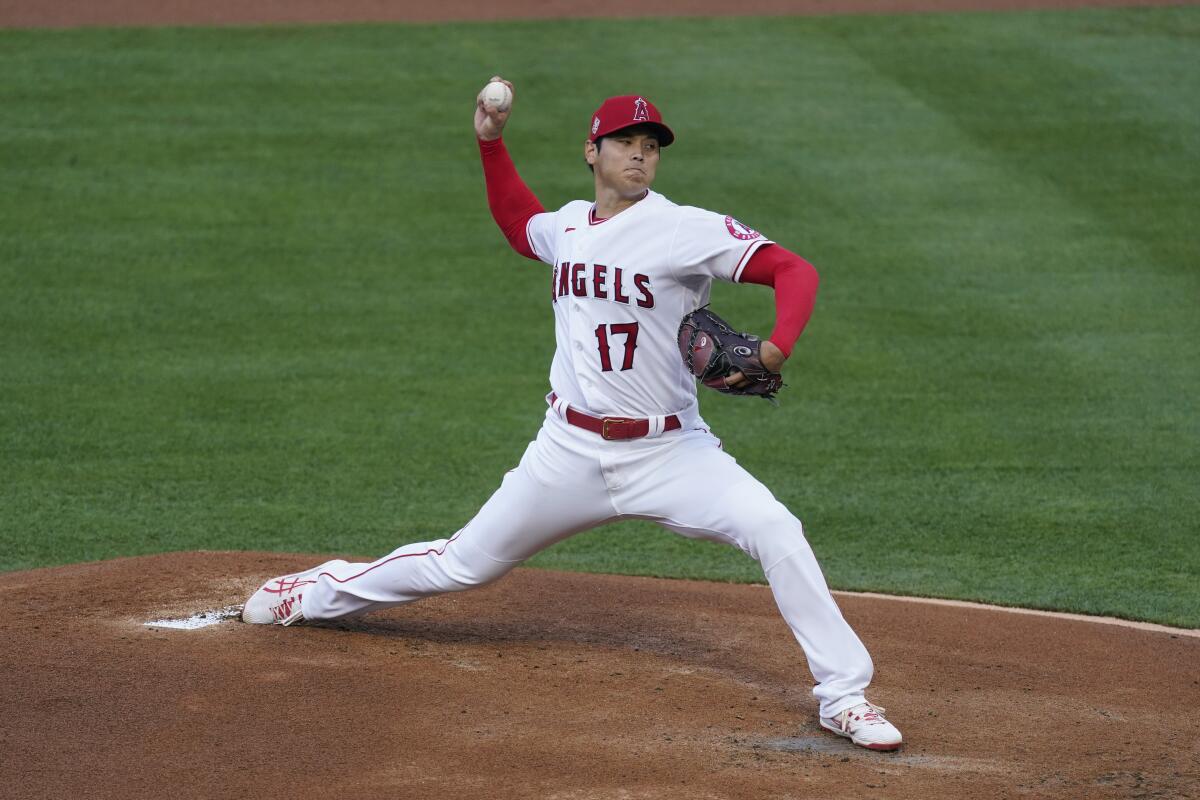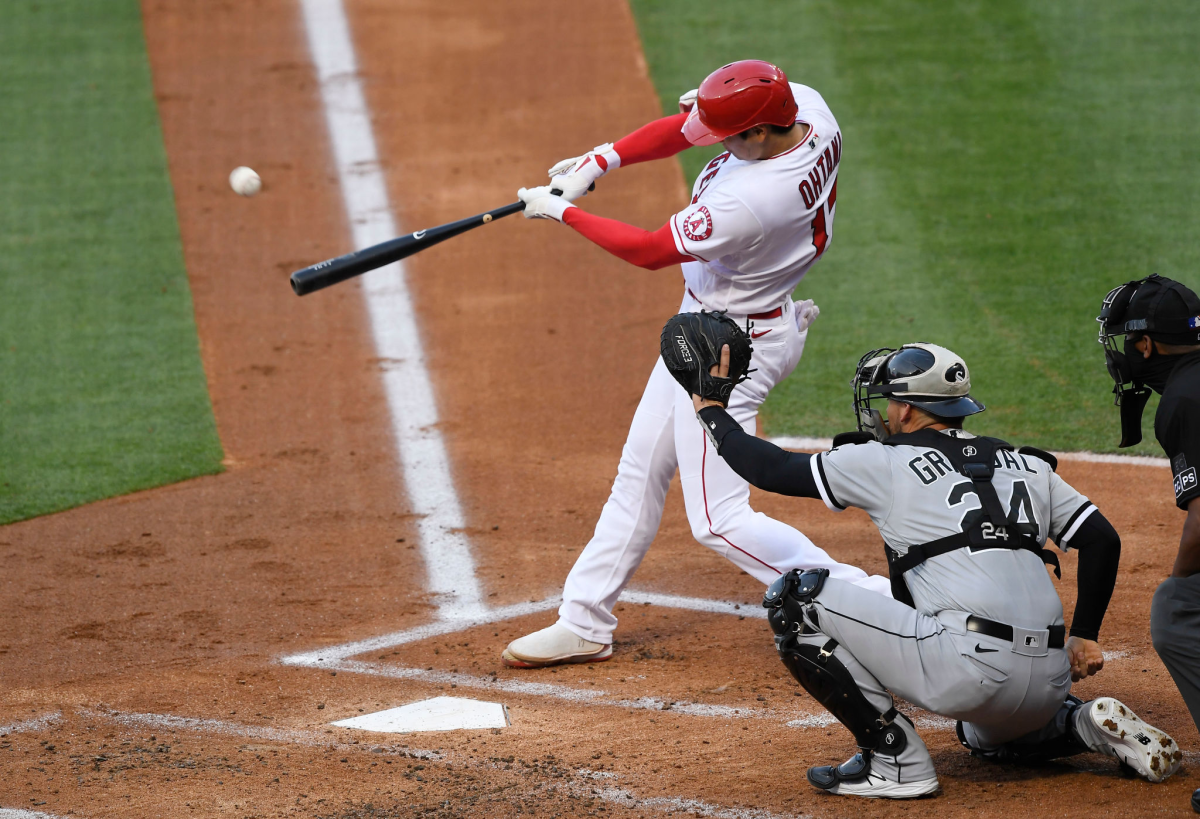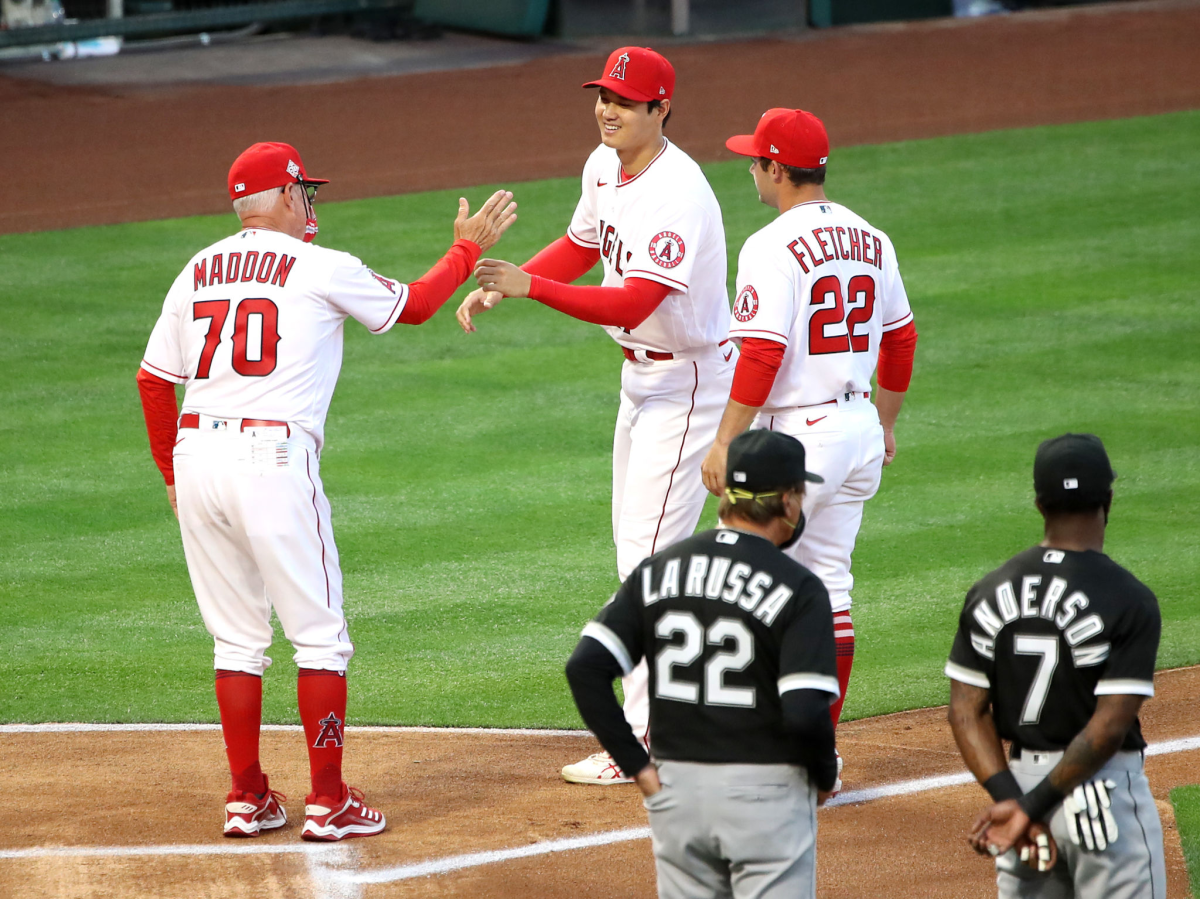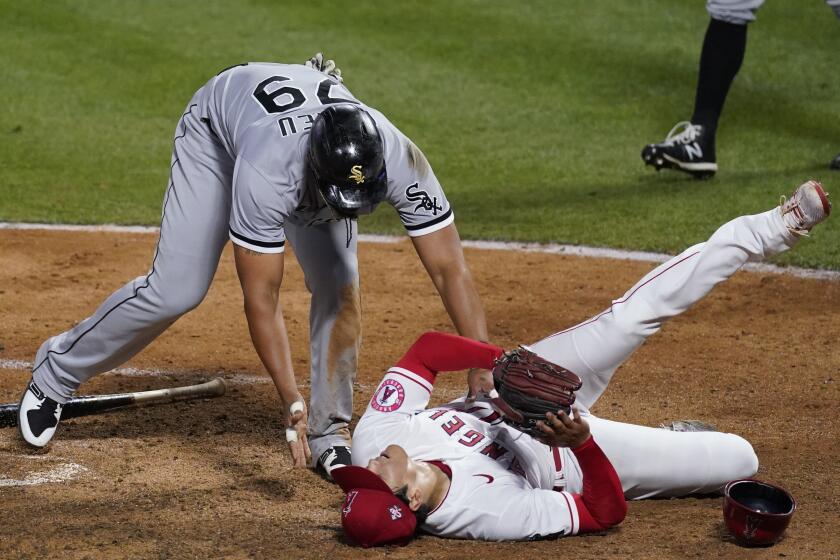Column: Joe Maddon nurturing Shohei Ohtani’s two-way promise with ‘play baseball’ approach

- Share via
Joe Maddon said he would let Shohei Ohtani play, and he did.
The Angels’ manager didn’t just bat Ohtani second in a game in which he was the starting pitcher. He also gave Ohtani every opportunity to pitch his way out of trouble in a 7-4 victory over the Chicago White Sox on Sunday night.
In the short term, the approach backfired, as Ohtani blew a three-run lead and was upended by a sliding José Abreu while covering home plate in the fifth inning.
Doesn’t matter.
Maddon did right by his player.
If Ohtani’s two-way experiment is ultimately successful, what happened in the fifth inning will be a reason why.
Maddon didn’t remove Ohtani from the game at the first sign of trouble. Or the second or third.
Shohei Ohtani has ‘general soreness’ after getting into a home-plate collision. Jared Walsh later hits a walk-off home run in the Angels’ 7-4 win.
With the Angels holding on to a 3-0 lead to begin the fifth, he allowed Ohtani to pitch to Abreu after he walked Adam Eaton to place runners on the corners with two outs.
When Ohtani walked Abreu, he let him face Yoán Moncada with the bases loaded.
The reason was obvious: Maddon wanted Ohtani to register the win after he blanked the White Sox through four innings and homered in his first at-bat.
“I’m grateful,” Ohtani said in Japanese. “If you consider the circumstances, it’s a situation in which it wouldn’t have been weird if he made a switch, and he stayed with me.”
The spread of analytics has devalued wins for pitchers, but being the pitcher of record almost certainly meant something to Ohtani, who is three years removed from his last victory.
Ohtani uncorked a couple of errant pitches to Moncada, resulting in three runs that tied the score and Ohtani walking gingerly off the field.
In this case, the gesture was more important than the result, especially with Ohtani saying he wasn’t injured in the collision with Abreu.
“Did you see the stuff he had?” Maddon said. “That was his spot. That’s how a guy becomes a guy.”
The degree to which Ohtani trusts Maddon will be critical in determining whether he can navigate an entire season as a two-way player who often pitches and hits in the same game, as he did Sunday for the first time in the major leagues. Ohtani will have to be honest with Maddon about how he feels.
That isn’t as simple as it seems on the surface. Ohtani and Maddon are very different people from very different places.
Linguistic and cultural differences have often resulted in misunderstandings between Japanese players and their teams.
And while Maddon is relatively well-read for a baseball manager, he doesn’t entirely comprehend how Ohtani thinks.
Consider the example of when Maddon was asked before the game about how Ohtani said he likes to hit on days he pitches.
Maddon guessed it was because pitching well translates into more confidence hitting, and vice versa.

)
That’s not Ohtani’s reasoning. Ohtani is from an obligation-based society. When his teammates score runs for him, he said he pitches cautiously because he doesn’t feel the leads are his to lose. The burden isn’t the same when he’s the one who drives in the runs.
“If I can generate runs, I’m more confident I’ve done my part and I can attack more aggressively when I’m on the mound,” Ohtani explained.
This particular misunderstanding is harmless. But not all of them are.
Which is why the simplicity of what Maddon has preached to Ohtani this year is important.
Maddon has told Ohtani to just play.
The clarity of Maddon’s message has transcended the barriers between them.
Asked about the freedom granted to him by Maddon, Ohtani replied, “More than freedom, it’s about not getting too nervous, not being too fine and having the mindset of genuinely enjoying the game and performing.”
In the five seasons Ohtani played for the Nippon-Ham Fighters of Nippon Professional Baseball, he pitched and batted in the same game 17 times. He was 10-2 with a 1.37 earned-run average in those games. He also batted .314.

To recapture that form, Maddon figured Ohtani had to rediscover something more fundamental. After three frustrating, injury-hampered seasons with the Angels, Ohtani had to relearn to how to treat the game as if it was a game.
Maddon calculated that pitching and hitting in the same game would help. With responsibilities both on the mound and in the batter’s box, Ohtani wouldn’t have time to overthink.
“Just go pitch, go hit, just play baseball,” Maddon said.
Ohtani did, and he looked as if he was back in Little League. He overpowered the White Sox with a fastball that touched 100.9 mph. In his first-inning at-bat, he pounced on a high 97-mph fastball by Dylan Cease and deposited it several rows up in the right-field bleachers.
And when the game was in the balance, Maddon practiced what he preached. He let Ohtani play.
More to Read
Go beyond the scoreboard
Get the latest on L.A.'s teams in the daily Sports Report newsletter.
You may occasionally receive promotional content from the Los Angeles Times.








